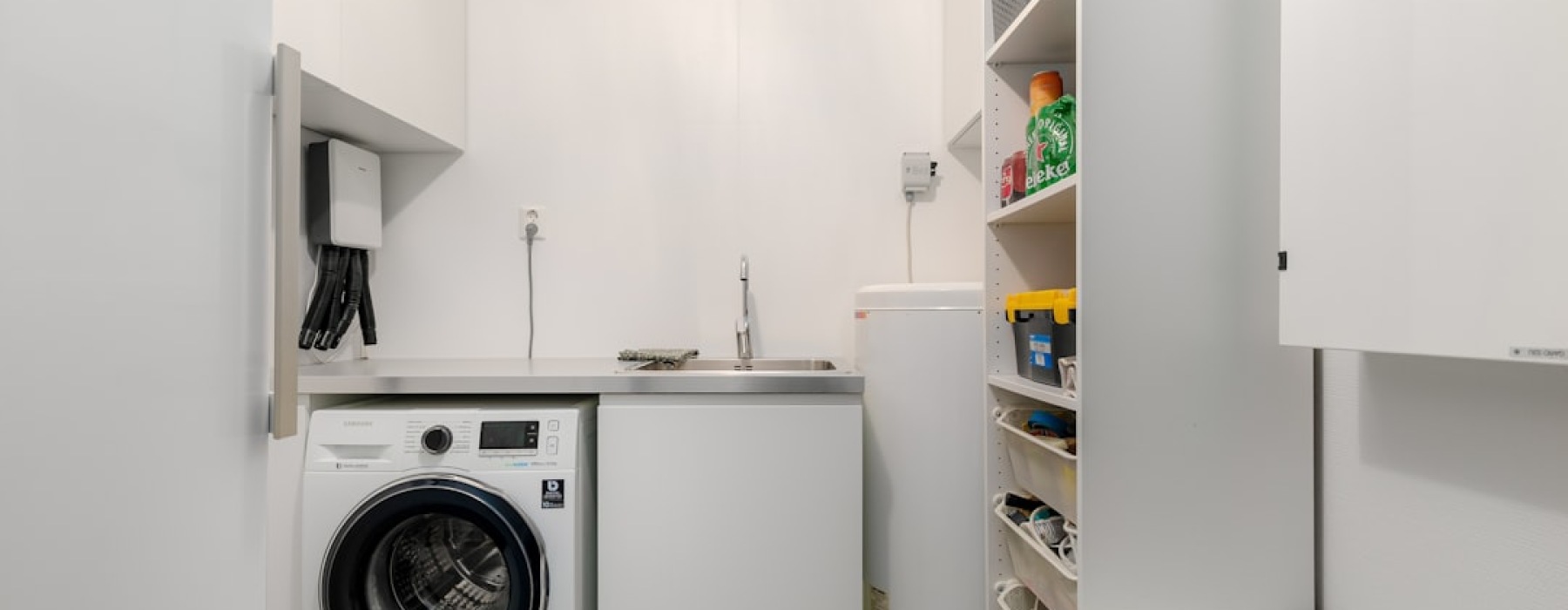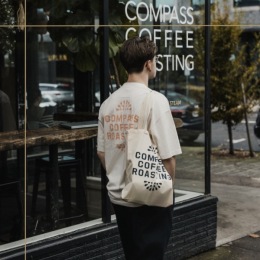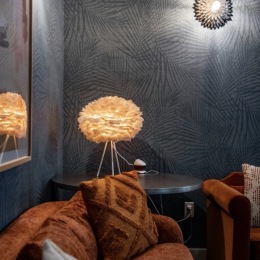Why In-Unit Laundry Changes Everything for Apartment Living
Apartments with in unit laundry represent one of the most sought-after amenities in modern rental housing. Instead of hauling laundry bags to shared facilities or local laundromats, residents enjoy the convenience of washing and drying clothes right in their own unit.
What You Need to Know:
- In-unit laundry includes full washer and dryer sets installed directly in your apartment
- Hookups only means connections are available, but you provide the appliances
- Shared facilities are communal laundry rooms within the building
- Rent premium typically ranges $50-$100 more per month for in-unit laundry
- High demand makes these units fill quickly in most markets
The appeal is obvious. As one renovation expert noted, having in-unit laundry "turns laundry day from a nightmare to a dream." No more gathering quarters, no more waiting for machines, and no more strangers handling your clothes.
Research shows that 67% of Vancouver apartment listings now include in-unit laundry, reflecting how this amenity has shifted from luxury to expectation. Urban professionals especially value the time savings and privacy that comes with doing laundry on their own schedule.
The convenience factor goes beyond just washing clothes. You can start a load before work, switch it during lunch, and fold everything when you get home. This flexibility fits perfectly with busy lifestyles and remote work schedules.
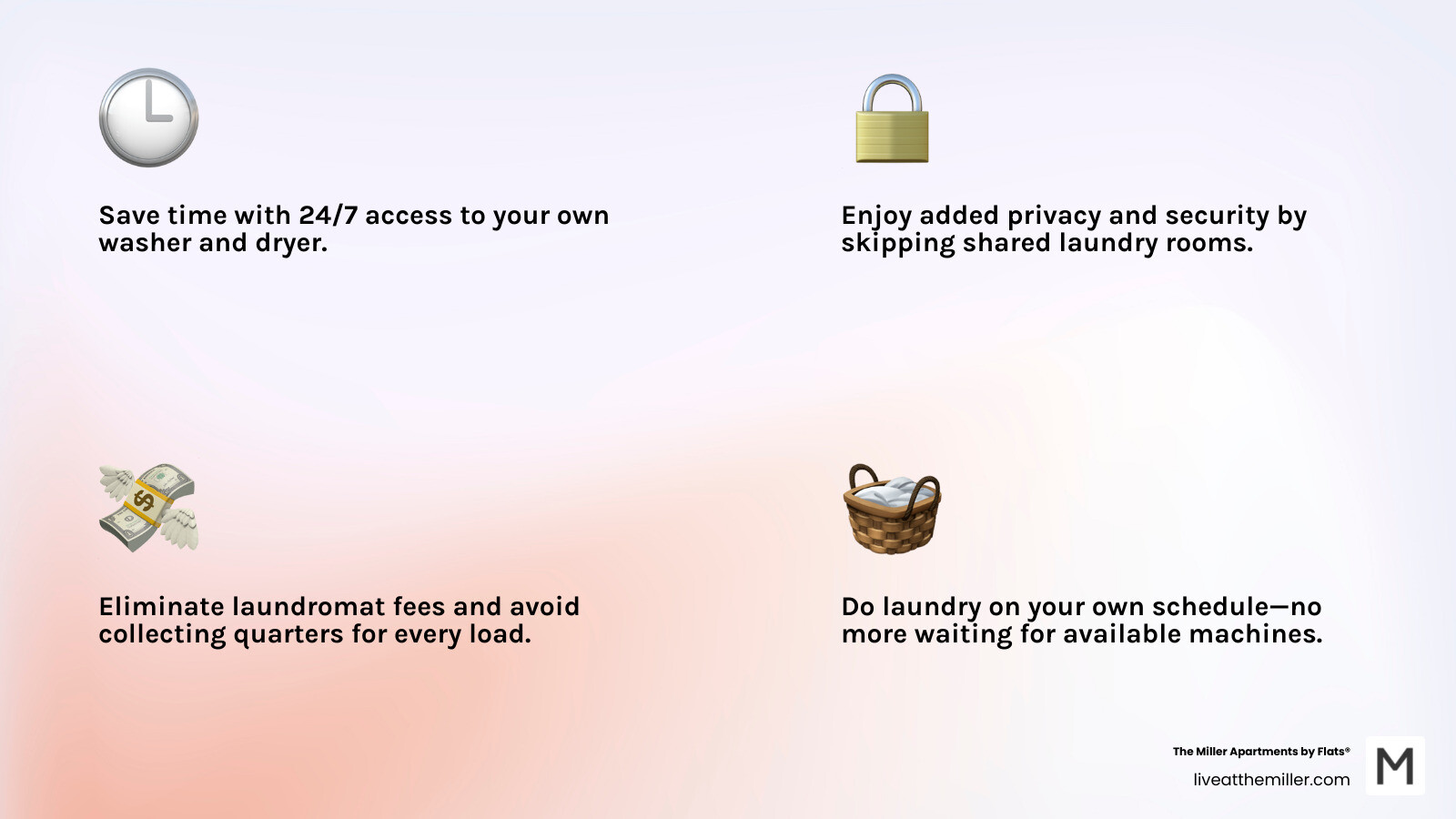
What Are Apartments with In Unit Laundry?
Apartments with in unit laundry feature washing machines and dryers located directly inside individual rental units, rather than in shared community spaces. This setup gives residents complete control over their laundry routine without leaving their apartment.
The concept encompasses several different arrangements. Some apartments come with full-sized washers and dryers already installed, while others provide the necessary hookups for tenants to bring their own appliances. Many urban apartments feature compact or stackable units designed to maximize space efficiency.
Understanding the distinction between different laundry setups helps renters make informed decisions. In-unit laundry means the appliances are physically inside your apartment. Washer and dryer hookups provide the electrical and plumbing connections needed for installation. On-site laundry refers to shared facilities within the building, typically in a basement or dedicated laundry room.
The demand for in-unit laundry has grown significantly as renters prioritize convenience and privacy. According to rental market data, apartments with this amenity command higher rents and experience faster lease-up rates compared to units with shared facilities.
For those working with limited space, there are many creative solutions available. Check out these 8 ideas to create a functional laundry room in a small space for inspiration on maximizing your laundry area efficiency.
Types of In-Unit Laundry Setups
Stackable washer-dryer combinations are the most common solution for space-conscious apartments. These units mount vertically, with the dryer positioned above the washer, making them ideal for closets, bathrooms, or kitchen alcoves. Most stackable units measure 24 inches wide, fitting into tight spaces while providing full-sized capacity.
Side-by-side configurations work well in apartments with dedicated laundry rooms or larger spaces. These setups allow for counter space above the units, creating a functional folding area. They also provide easier access for loading and unloading, which many residents prefer.
All-in-one washer-dryer combos represent the ultimate space-saving solution. These single units wash and dry clothes in the same drum, eliminating the need for transferring loads between machines. While convenient, they typically handle smaller loads and take longer to complete full cycles.
Compact units offer another option for small apartments. These appliances are smaller than standard models but still provide separate washing and drying functions. They work particularly well in studio apartments or units where space is at a premium.
Ventless dryers have gained popularity in urban apartments where traditional venting isn't feasible. These units use condensation or heat pump technology to dry clothes without requiring external venting, making installation possible in locations where conventional dryers won't work.
Washer and Dryer Hookups vs Full Units
The distinction between hookups and full units significantly impacts the rental experience. Apartments with washer and dryer hookups provide the necessary electrical outlets, water supply lines, and drain connections, but tenants must purchase and install their own appliances.
Hookup arrangements give renters control over appliance selection, allowing them to choose brands, features, and capacity levels that match their preferences. However, this setup requires upfront investment and responsibility for maintenance and repairs.
Full unit arrangements include appliances provided by the landlord or property management company. These setups offer immediate convenience without upfront costs, but tenants have no control over appliance quality or features. Maintenance responsibilities vary by lease agreement, with some landlords handling all repairs while others require tenants to service the machines.
When evaluating hookup-only apartments, consider the costs of purchasing appliances, delivery, installation, and eventual removal when moving. These expenses can add up quickly, especially for short-term leases.
Benefits of Apartments with In Unit Laundry
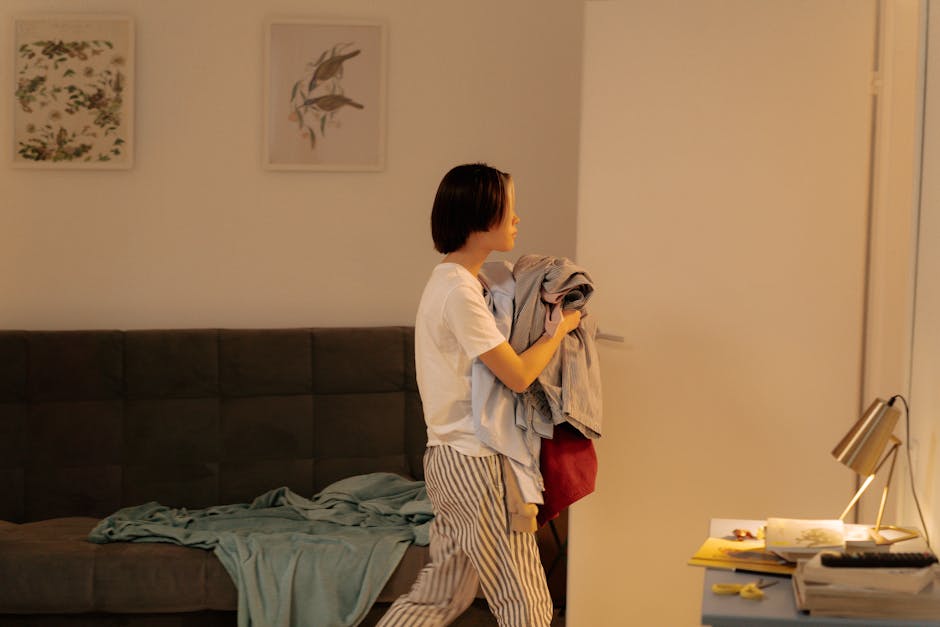
The primary advantage of apartments with in unit laundry is the dramatic improvement in daily convenience. Residents can do laundry on their own schedule without coordinating with other tenants or traveling to external facilities. This flexibility proves especially valuable for people with demanding work schedules or families with children.
Time savings represent another significant benefit. Without the need to transport laundry to shared facilities, residents save hours each week. They can multitask effectively, starting loads while cooking dinner or working from home, then switching loads during natural breaks in their routine.
Privacy and security concerns also drive demand for in-unit laundry. Shared facilities often require leaving clothes unattended, creating opportunities for theft or unwanted handling. In-unit laundry eliminates these concerns while providing complete control over hygiene standards and detergent choices.
The elimination of quarters and payment cards removes another layer of inconvenience. Shared laundry facilities typically require exact change or prepaid cards, adding friction to an already time-consuming process. In-unit laundry allows residents to simply start machines whenever needed.
Convenience and Time Savings
The 24/7 availability of in-unit laundry transforms how residents approach this household chore. Instead of planning laundry around facility hours or peak usage times, they can start loads at any time that fits their schedule. This flexibility proves particularly valuable for shift workers, parents, or anyone with irregular schedules.
Multiple load capability improves efficiency for households with substantial laundry needs. Residents can run several loads simultaneously or in quick succession without waiting for shared machines to become available. This capability proves essential for families or individuals who prefer to batch their laundry tasks.
The ability to immediately address spills, stains, or urgent cleaning needs provides peace of mind. When accidents happen, residents can treat stains and start washing immediately rather than waiting for the next trip to shared facilities. This immediate response often means the difference between saving and losing garments.
Remote work arrangements have made in-unit laundry even more valuable. Professionals can start loads during coffee breaks, switch them between meetings, and fold clothes during lunch breaks. This integration of household tasks with work schedules maximizes productivity and reduces evening and weekend chores.
Privacy and Security
In-unit laundry provides complete privacy for handling personal items, delicate garments, and family clothing. Shared facilities often create uncomfortable situations when other residents see or handle personal belongings. This privacy proves especially important for individuals with specific hygiene requirements or valuable clothing items.
Security concerns about theft or tampering disappear with in-unit laundry. Shared facilities require leaving clothes unattended for extended periods, creating opportunities for theft or unwanted handling. In-unit laundry eliminates these risks while ensuring that only household members have access to personal items.
Hygiene control represents another privacy benefit. Residents can maintain their own cleanliness standards without worrying about previous users' habits or cleaning practices. This control proves particularly important for individuals with allergies, skin sensitivities, or specific detergent preferences.
The ability to handle delicate or special-care items safely adds value for residents with professional wardrobes or expensive clothing. In-unit laundry allows for proper care of these items without the risk of damage from shared machine misuse or harsh detergents left by previous users.
Cost Considerations Over Time
While apartments with in-unit laundry typically command higher rents, the long-term financial picture often favors this amenity. Laundromat costs can add up quickly, especially for families or individuals who do laundry frequently. The convenience of in-unit laundry often justifies the additional monthly rent expense.
Utility costs for in-unit laundry vary by arrangement. When landlords include appliances, they sometimes absorb water and electricity costs as part of the rent. However, many leases require tenants to pay for the utilities used by their laundry appliances, which can add significantly to monthly expenses.
Maintenance responsibilities affect long-term costs differently depending on lease arrangements. When landlords provide appliances, they typically handle repairs and maintenance, protecting tenants from unexpected expenses. However, tenant-owned appliances require residents to budget for repairs, maintenance, and eventual replacement.
The time value of convenience also factors into cost considerations. The hours saved by having in-unit laundry can be used for income-generating activities, family time, or other valuable pursuits. This time savings often justifies the additional rent expense for busy professionals and families.
How to Find Apartments with In-Unit Laundry
Modern rental search platforms make finding apartments with in unit laundry relatively straightforward through specialized filters and search options. Most major rental websites allow users to specifically search for units with this amenity, streamlining the apartment hunting process.
Online search strategies should begin with major rental platforms that serve your target area. Use specific filters for "in-unit laundry," "washer/dryer in unit," or "laundry hookups" to narrow results. Save searches with these criteria to receive notifications when new qualifying units become available.
Property websites often provide the most detailed information about laundry amenities. Many apartment communities maintain their own websites with comprehensive amenity lists, floor plans, and virtual tours that clearly show laundry setups. These resources help renters understand exactly what type of laundry arrangement each property offers.
Direct contact with property management companies can reveal upcoming availability or waitlist opportunities. Many desirable units with in-unit laundry lease quickly, so establishing relationships with leasing offices can provide early access to new listings.
Online Search Strategies
Rental websites offer increasingly sophisticated search filters that make finding laundry-equipped apartments easier. Start with broad geographic searches, then apply amenity filters to narrow results. Most platforms distinguish between "in-unit laundry," "washer/dryer hookups," and "on-site laundry facilities."
Virtual tours have become standard for many rental listings, allowing prospective tenants to see laundry setups before scheduling in-person visits. These tours often show the exact placement, type, and condition of laundry appliances, helping renters make informed decisions.
Keyword searches within listing descriptions can reveal additional details about laundry amenities. Search for terms like "stackable," "full-size," "compact," or "ventless" to find units with specific laundry configurations that match your preferences.
Setting up saved searches with email alerts ensures you don't miss new listings that match your criteria. Since units with in-unit laundry often lease quickly, immediate notification of new availability provides a competitive advantage in hot rental markets.
Questions to Ask During Tours
When touring apartments with laundry amenities, ask specific questions about appliance age, condition, and maintenance history. Older appliances may require frequent repairs or provide poor performance, affecting your living experience and potentially creating unexpected expenses.
Clarify maintenance responsibilities before signing any lease. Determine whether the landlord or tenant handles repairs, routine maintenance, and eventual appliance replacement. This information affects both your budget and your responsibilities as a tenant.
Inquire about utility costs and how they're calculated. Some landlords include water and electricity for laundry use in the rent, while others charge separately. Understanding these costs helps you budget accurately and compare different rental options.
Ask about building policies regarding laundry appliance installation or replacement. Some buildings have restrictions on appliance types, brands, or installation methods that could affect your options if you need to replace units during your tenancy.
For more information about touring apartments and what to look for, consider scheduling a tour to see laundry amenities in person.
What to Consider Before Renting

Before committing to an apartment with in-unit laundry, carefully evaluate the maintenance arrangements and your responsibilities as a tenant. Lease agreements vary significantly in how they handle appliance maintenance, repairs, and replacement costs.
Understanding utility implications is crucial for budgeting. In-unit laundry can significantly increase water and electricity usage, potentially adding substantial costs to monthly expenses. Some landlords include these utilities in rent, while others charge separately or use submetering systems.
Space considerations affect both functionality and aesthetics. Ensure that laundry appliances don't compromise living space or create noise issues. Consider the placement of units relative to bedrooms, living areas, and neighbors to avoid disruption.
Building policies and lease terms may restrict your options for appliance maintenance, replacement, or upgrades. Some buildings require specific appliance types or brands, while others prohibit tenant modifications to laundry setups.
Maintenance and Repair Considerations
Maintenance responsibilities vary dramatically between different rental arrangements. When landlords provide appliances, they typically handle repairs and maintenance, but response times and service quality can vary. Tenant-owned appliances require residents to arrange and pay for all maintenance and repairs.
Appliance warranties provide important protection but may have limitations in rental situations. Understand what warranty coverage exists, who can authorize repairs, and how warranty claims are processed. Some warranties may be voided if appliances are moved or serviced by unauthorized technicians.
Service call policies affect how quickly problems get resolved. Some landlords have maintenance staff who can handle basic laundry appliance issues, while others require outside service calls that may take days to schedule. Understanding these policies helps set realistic expectations.
Replacement policies become important when appliances reach the end of their useful life. Clarify whether landlords will replace failed appliances, what timeline to expect, and what happens if replacement is delayed. These policies significantly affect your living experience.
Space and Installation Requirements
Unit dimensions and placement affect both functionality and aesthetics. Measure laundry spaces carefully to ensure adequate clearance for doors, maintenance access, and ventilation. Cramped installations can create ongoing problems and reduce appliance lifespan.
Ventilation requirements vary by appliance type and building construction. Traditional dryers require external venting, while ventless models use different technologies. Ensure that your chosen setup meets building codes and provides adequate moisture control.
Electrical requirements for laundry appliances often exceed standard household circuits. Verify that electrical service can handle your appliances' power requirements without overloading circuits or requiring expensive upgrades.
Plumbing connections must provide adequate water pressure and drainage capacity. Poor water pressure can affect washing performance, while inadequate drainage can cause backups and water damage. Have these systems inspected before committing to a lease.
Top Features to Look for in Laundry-Equipped Apartments
Energy efficiency should be a top priority when evaluating laundry-equipped apartments. Modern, energy-efficient appliances reduce utility costs and environmental impact while often providing better performance and reliability. Look for ENERGY STAR certified units that meet current efficiency standards.
Adequate capacity ensures that laundry appliances can handle your household's needs without requiring excessive loads or frequent washing. Consider your typical laundry volume and choose units with appropriate capacity to avoid frustration and inefficiency.
Proper ventilation and moisture control prevent mold, mildew, and air quality problems. Ensure that laundry areas have adequate ventilation, whether through external venting, exhaust fans, or ventless appliance technology.
Storage space around laundry appliances improves functionality and organization. Look for apartments with shelving, cabinets, or counter space near laundry units for storing detergents, supplies, and folded clothes.
Modern appliances with advanced features can significantly improve the laundry experience. Features like steam cleaning, sanitizing cycles, and smart connectivity provide convenience and performance benefits that justify higher rent costs.
Modern Amenities and Community Features
The best laundry-equipped apartments often exist within communities that offer comprehensive amenities and services. Fitness centers, spa services, and coworking spaces complement in-unit laundry by providing a complete lifestyle package that supports residents' diverse needs.
Community amenities like concierge services, package handling, and maintenance support improve the overall living experience. These services prove particularly valuable for busy professionals who appreciate having in-unit laundry as part of a broader convenience package.
Properties like The Miller Apartments exemplify how in-unit laundry integrates with other luxury amenities. The combination of modern laundry facilities with features like day spas, fitness centers, and coworking lounges creates a comprehensive living experience that justifies premium rents.
For more information about comprehensive apartment amenities, explore amenities that complement in-unit laundry features.
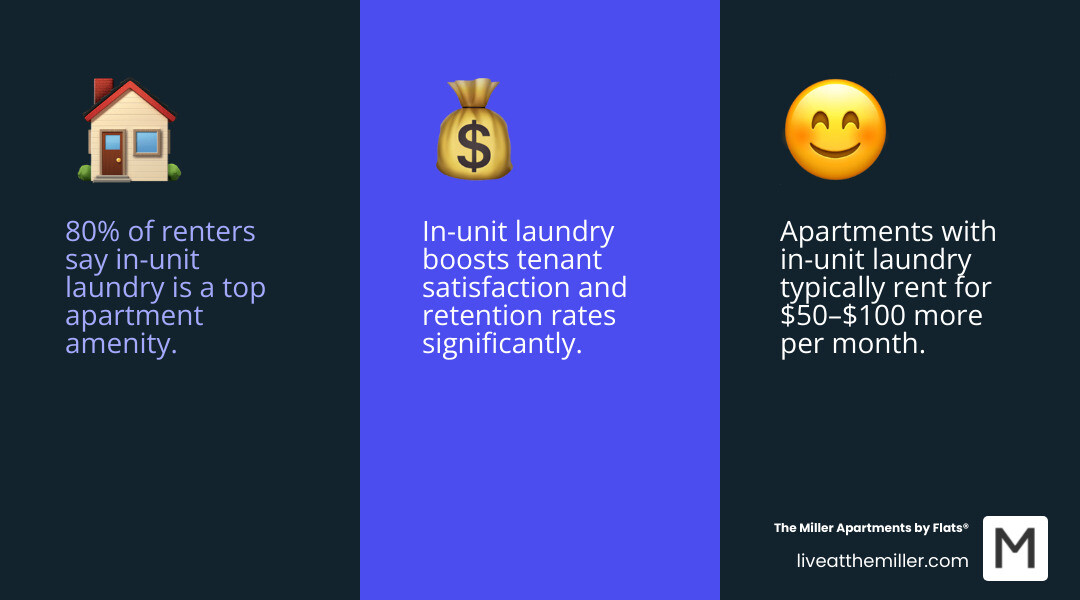
Frequently Asked Questions about In-Unit Laundry Apartments
How much more do apartments with in-unit laundry cost?
Research indicates that apartments with in unit laundry typically command rent premiums of $50-$100 per month compared to similar units without this amenity. However, the exact premium varies by market conditions, property type, and local demand.
In competitive rental markets, the premium can be higher due to strong demand for this convenience. Luxury properties may include in-unit laundry as part of a comprehensive amenity package, making it difficult to isolate the specific cost impact.
The premium often reflects not just the convenience value but also the additional utility costs, maintenance responsibilities, and space allocation required for in-unit laundry. Properties must factor these costs into rent pricing to maintain profitability.
Long-term cost analysis often shows that the rent premium can be offset by savings on laundromat fees, transportation costs, and time value. For many renters, the convenience and privacy benefits justify the additional monthly expense.
Who is responsible for maintaining in-unit washers and dryers?
Maintenance responsibilities depend entirely on lease arrangements and whether appliances are landlord-provided or tenant-owned. When landlords provide appliances, they typically handle maintenance and repairs, though response times and service quality can vary.
Tenant-owned appliances place full maintenance responsibility on residents, including routine maintenance, repairs, and eventual replacement. This arrangement provides control over service quality but requires budgeting for unexpected repair costs.
Some lease agreements create hybrid arrangements where landlords handle major repairs while tenants handle routine maintenance like cleaning lint traps and replacing hoses. These arrangements require clear communication about responsibilities and procedures.
Always clarify maintenance responsibilities before signing a lease, including who pays for repairs, how service calls are scheduled, and what happens if appliances fail completely. This information significantly affects your budget and living experience.
Can I install my own washer and dryer in an apartment?
Installing your own washer and dryer in an apartment requires landlord approval and may involve significant considerations including space, building codes, electrical capacity, and plumbing connections. Many apartment buildings weren't designed with laundry hookups, making installation complex or impossible.
Building approval processes vary by property and local regulations. Some buildings prohibit tenant installations due to insurance, liability, or structural concerns. Others may allow installations but require professional installation and specific appliance types.
Electrical and plumbing requirements often exceed standard apartment infrastructure. Installing laundry appliances may require electrical upgrades, new plumbing connections, and ventilation systems that could cost thousands of dollars.
The most successful installations typically occur in apartments with existing hookups or in buildings designed to accommodate tenant-installed appliances. Before attempting installation, consult with landlords, building management, and qualified contractors to understand feasibility and requirements.
Conclusion
Apartments with in unit laundry have evolved from luxury amenity to standard expectation for many renters. The convenience, privacy, and time savings these units provide make them highly desirable in competitive rental markets.
The key to finding the right laundry-equipped apartment lies in understanding the different types of arrangements available and evaluating them against your specific needs and budget. Whether you prefer full-service arrangements where landlords provide everything or hookup-only setups that give you control over appliance selection, options exist for different preferences and circumstances.
Consider the total cost of ownership, including rent premiums, utility costs, and maintenance responsibilities when evaluating different options. The most expensive option upfront may provide the best long-term value when you factor in convenience, time savings, and peace of mind.
Modern apartment communities like The Miller Apartments demonstrate how in-unit laundry integrates with other amenities to create comprehensive living experiences. The combination of convenience features with community amenities like fitness centers, spa services, and coworking spaces appeals to residents who value both privacy and community.
As rental markets continue to evolve, in-unit laundry will likely become even more standard, making apartments without this amenity increasingly difficult to lease. For renters prioritizing convenience and quality of life, investing in a unit with in-unit laundry often proves worthwhile.
The apartment hunting process should include specific attention to laundry amenities, maintenance arrangements, and associated costs. By asking the right questions and understanding your options, you can find an apartment that meets your laundry needs while fitting your budget and lifestyle preferences.
For those interested in experiencing the convenience of in-unit laundry combined with luxury amenities, explore luxury apartments for rent in Vancouver, WA that offer comprehensive living solutions.
